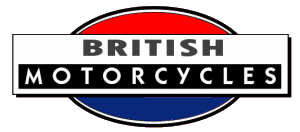


Turner produced a motorcycle in 1946, a radical contraption which was a one-off. It was seen in Brussels in April 1946, called the Turner Byvan (aka LDV), and was constructed from components left over after the end of World War II. It had a 126cc Royal Enfield wartime Flying Flea engine and three-speed gearbox, mounted on top of the pressed-steel front forks and which drove the wheel by chain.
The rest of the machine was a large box, fitted with forks to provide a mounting for a wheel at the rear, and with a seat for the rider on top. In effect, it was just a large parcel carrier and nothing further came of it.
The Turner Manufacturing Company was an engineering business around the middle of the 19th century.
In 1902 the company's owner, James Burns Dumbell, started production of motor cars, having obtained the manufacturing rights of a well established vehicle, the Belgian Miesse steam car, from the Brussels based company of J. Miesse.
The Turner-Miesse steam cars were initially produced at the company's works in Walsall Street. The car had a three cylinder, single acting engine (steam only admitted above the piston) with a paraffin-fired flash boiler.
1906 Private company formed as Turners Motor Manufacturing Co. Ltd.
1913 April. Advert of 10 hp 4-cylinder model
1938 Name changed.
1939 Aircraft industry supplier
1961 Engineers, manufacturing aircraft hydraulic components, winch gear and machined components for the automotive trade and hydraulic and pneumatic equipment. 800 employees.
Turner Manufacturing Company of Wulfruna Works, Villiers Street, Wolverhampton
1914 Directory lists them as Turner, T., and Co., Lever Street, Wolverhampton and as motor car manufacturers.
Thomas Turner started in business by manufacturing velocipedes, cycles and cars. The car production wasn't terribly successful and ceased in 1928 when faced with competition from mass produced vehicles.
In the 1930s Turners started to manufacture aircraft landing gear, as a result of WWII this sold in such quantities that the works at Moorfield Road had to be enlarged. I read that they also produced a marine diesel engine at this time.
In common with many other industries in the UK post the war they found themselves with excess capacity after the war and looked again at producing vehicles. There was great interest in increasing agricultural production at the time so Turners started producing agricultural machinery. This resulted in the "Yeoman of England" tractor. The engine was designed in house by a Freeman Sanders who also developed the Fowler diesel and Ferguson TEF20 engine. A range of accessories was also developed including ploughs, cultivators, harrows and mowers.
1950 The tractor was submitted for test by the NIAE in June 1950 whereupon several problems were found. The radiator was too small and the engine overheated when undergoing a belt test. Problems were also found with the transmission. After these problems had been solved the tractor went on sale for £690 which was more expensive than the opposition. Unfortunately problems continued to surface, the air cleaner had to be replaced because the elements were breaking up and being drawn in to the engine cylinders.
The engine didn't start very well in cold weather and many machines suffered from head gasket failure. The major problem remained the transmission wasn't sufficiently robust, resulting in many failures. Thus even though the engine was re-designed in 1951, the tractor had gained a bad reputation. Predictably sales were affected although production apparently continued until 1957 although alternative tractors were available for some £300 less.
In the late 1940s a separate company was formed called Light Delivery Vehicles which operated from Lever Street where the two wheeled "Byvan", costing £120 and the three wheeled "Trivan", costing £150 were produced. Both vehicles were powered by a 148cc two stroke Turner engine giving a top speed of 30mph.
The "Byvan" was a motorcycle equipped with a steel carrying box capable of a 1.5cwt load. In comparison the "Trivan" had two rear wheels with a 3cwt carrying capacity.
Another product was the "Rixi" which was seemingly derived from the "Trivan" (seen in the picture either side of this text) and had a four person seat above the two rear wheels. All of these products shared one thing in common in that they were not successful which in all honesty seems to sum up Turner"s engineering products in general.
Source: Graces Guide
If you have further information or a query related to this page, please contact us